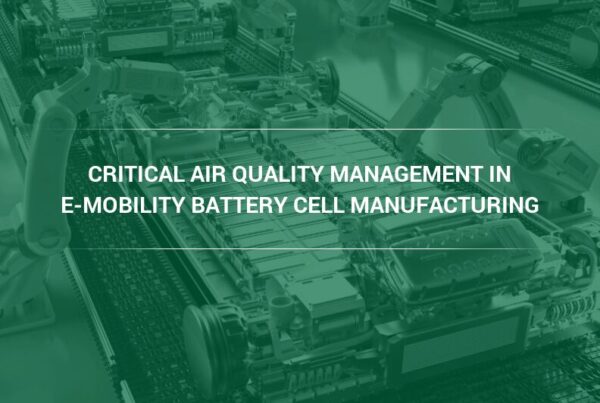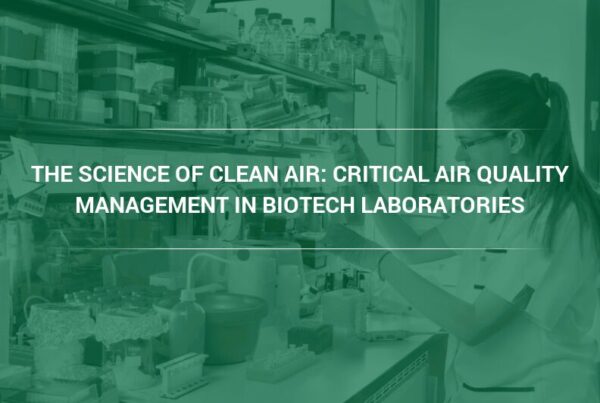School indoor air quality affects millions of students daily, yet many educational facilities still rely on outdated filtration systems that fail to protect against many common airborne contaminants. With growing awareness of how air quality impacts student health and academic performance, schools need practical guidance on upgrading their HVAC filtration systems effectively.
A recent fact sheet published by the U.S. Green Building Council (USGBC) offers vital insights for school administrators facing challenges in updating their schools’ air filtration technology. This installment in the “School Indoor Air Quality Fact Sheets” series was developed in collaboration with Flu Lab, ASHRAE, and air filtration experts from leading companies and educational institutions in the field.
Proper air filtration and well-planned ventilation can significantly reduce respiratory illnesses, improve cognitive function, and help schools operate safely during wildfire events. The challenge isn’t whether to upgrade; it’s knowing which filters work best for your specific system without overwhelming your equipment.
Understanding MERV Ratings and Filter Efficiency
MERV (Minimum Efficiency Reporting Value) ratings measure a filter’s ability to capture particles of various sizes. Efficiency is indicated numerically with MERV 1 providing the lowest efficiency and MERV 16 indicating the highest efficiency. School HVAC systems have historically used MERV 8 panel filters. Filters with a MERV value of less than MERV 7 shouldn’t be used in public buildings.
A filter’s MERV value is determined by testing its efficiency against particles of different sizes. Dirt particles, divided into three size categories E1, E2, and E3, which range from a low of 0.3 microns in size to a high of 10 microns. These particles are passed through a test duct and onto the filter. The filter’s ability to capture particles across these size ranges is compared to a MERV chart, The final MERV value is the highest rating at which the filter meets all three size range requirements.
A MERV 13 rating, for example, requires that the tested filter capture at least 50% of E1 particles, at least 85% of E2 particles, and at least 90% of E3 particles.
For infectious aerosols carrying viruses like SARS-CoV-2, influenza, and RSV, higher MERV-rated filters prove very effective. A MERV 13 filter is rated to remove 77% of particles in the size range of typical infectious aerosols, while a MERV 16 filter is rated to achieve 95% removal efficiency of these same particles.
Important note: Some filters achieve these higher MERV ratings by relying on a temporary electrostatically charged media. This charge can lose effectiveness once the filter is in use and begins loading with dirt. Always look for an air filter’s MERV-A value, which gives a better indication of its long-term performance.
Debunking the High-Pressure Drop Myth
A persistent myth that air filtration specialists encounter in their work with schools is that MERV 13 filters, or higher-efficiency filters in general, automatically create excessive pressure drop, overwhelming HVAC systems. This assumption prevents many schools from upgrading to more effective air filtration, despite significant health and performance benefits.
In reality, pressure drop doesn’t correlate directly with MERV ratings; a well-designed MERV 13 filter can operate at similar pressure levels as a basic MERV 8 filter. Construction methods, filter depth, and media design influence pressure drop more than the efficiency rating alone. High-performance air filters use advanced construction techniques — such as dual-layered media, pleat geometry, or advanced fiber arrangements — to enhance particle removal while maintaining lower pressure drop.
The USGBC fact sheet highlights that MERV 13 filters can often have the same pressure drop as MERV 8 filters while providing superior protection from airborne contaminants. Don’t assume your system can’t handle a MERV 13 upgrade; instead request manufacturer data comparing pressure drops between your current filter and potential replacements. Many schools discover they can upgrade filtration without modifications to their existing equipment. Contact a qualified air filtration professional should you need assistance.
The AQ13 Advantage for School Applications
Among the available filter options, a MERV 13 2-inch pleated air filter with a low pressure drop combines high particle removal efficiency with practical operational benefits. A filter like this makes cleaner air achievable for school maintenance teams without damaging HVAC systems or sacrificing airflow.
The AQ13 represents this type of filter well, delivering MERV 13 performance while maintaining pressure drop levels comparable to standard MERV 8 filters. These filters typically provide double the service life of conventional MERV 8 options, reducing replacement frequency and maintenance costs. The filter has been designed and constructed of high-strength materials to easily withstand this additional service life.
This extended service life proves particularly valuable for schools managing multiple buildings and tight maintenance schedules. Fewer filter changes mean reduced labor costs and less disruption to building operations, while maintaining superior air quality protection for students and staff. The flexibility to schedule filter changeouts to seasons of the year where the weather conditions are more favorable is particularly valuable to facilities located in areas where winters are harsh or where the summer heat can be dangerous.
Addressing Wildfire Smoke and Other Air Quality Challenges
Schools should also consider their geographic risk profile when selecting air filtration strategies. Facilities near high-traffic areas or in regions with frequent air quality alerts benefit from the enhanced protection that higher MERV ratings provide, even during normal operating conditions.
Wildfire smoke presents unique filtration challenges that require specialized consideration. Smoke particles range from 0.05-0.4 microns, smaller than most infectious aerosols and more difficult to capture. Even high-efficiency MERV filters achieve lower removal rates for wildfire particles compared to virus-containing aerosols.
LEARN MORE: How High-Efficiency Air Filters Can Help Protect Indoor Air Quality During Wildfire Season
The fact sheet points out that a MERV 13 filter removes approximately 69% of wildfire particles, while MERV 16 achieves 96% removal. For schools in wildfire-prone regions, this difference could justify the higher efficiency investment, especially when combined with activated media filters to address molecular pollutants (i.e. gaseous contaminants) that mechanical filters cannot capture.
Making Smart Air Quality Decisions for Your School
Upgrading school air filtration requires balancing multiple factors, including IAQ needs, system compatibility, maintenance requirements, and budget constraints.
For the best performance, inspect your school’s HVAC system filters every quarter or during each filter change, whichever comes first. The fact sheet recommends tracking several factors at the district level so that IAQ challenges can be effectively addressed:
- Number of filters and prefilters in the system, along with their locations and MERV ratings.
- Dimensions of the current filter rack.
- The pressure drop each fan can handle, for both clean and dirty filters.
Additional tips from the fact sheet include working with qualified professionals to evaluate upgrade options specific to your equipment and local air quality challenges, requesting detailed manufacturer data on pressure drop performance, and remembering that even buildings with limited outdoor ventilation can significantly reduce health risks through efficient HVAC filtration. Filter upgrades are one of the most accessible and impactful improvements schools can make to protect student and staff wellbeing.
For more details, graphs, and diagrams explaining how to upgrade school air filtration and ventilation, access the full factsheet.
About Camfil USA
The Camfil Group is headquartered in Stockholm, Sweden, and has 29 manufacturing sites, six R&D centers, local sales offices in 35+ countries, and 5,700 employees and growing. We proudly serve and support customers in a wide variety of industries and communities across the world. To discover how Camfil USA can help you to protect people, processes, and the environment, visit us at www.camfil.us.
Media Contact
Lynne Laake
Camfil USA Air Filters
Phone: 888-599-6620
Email: Lynne.Laake@camfil.com



